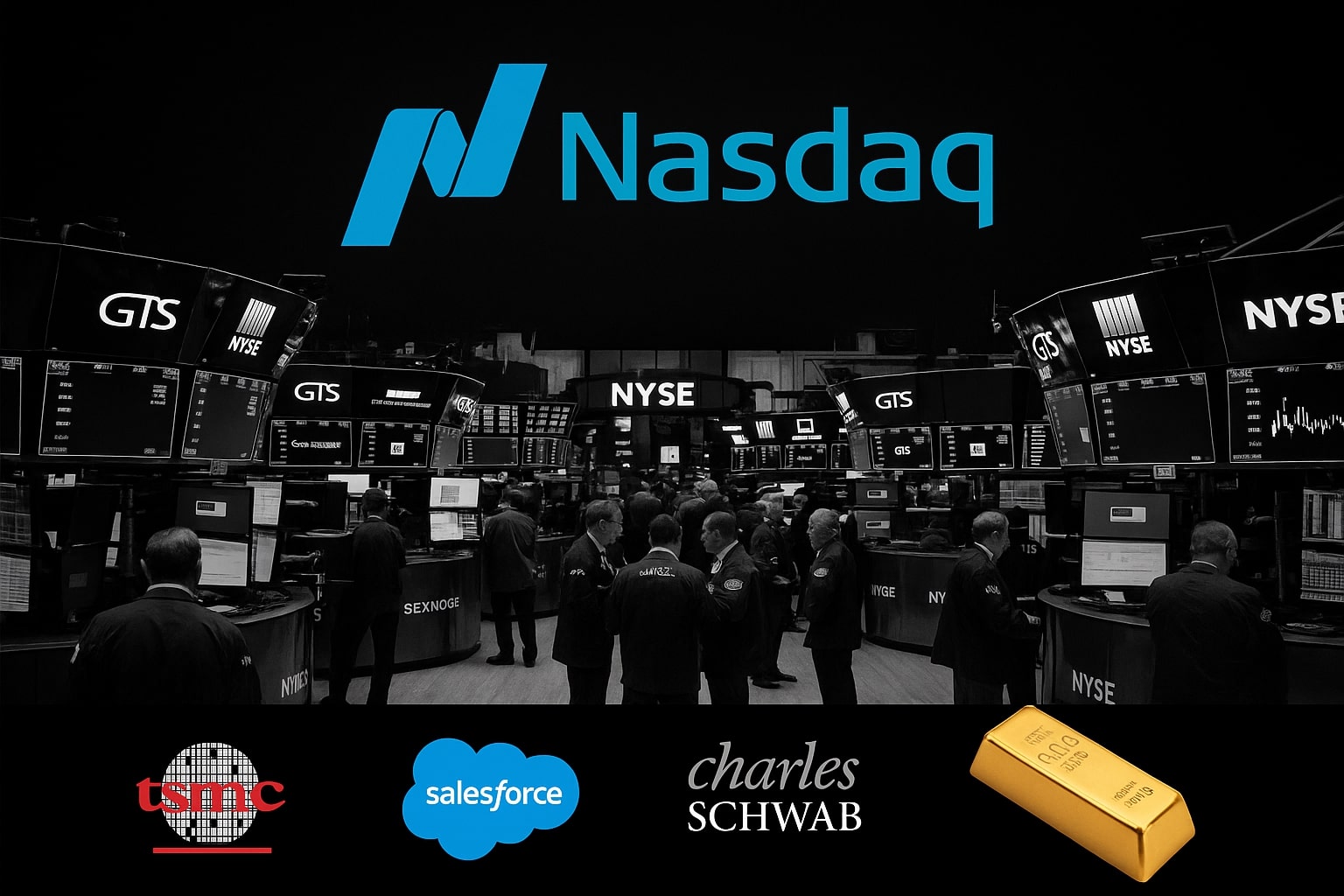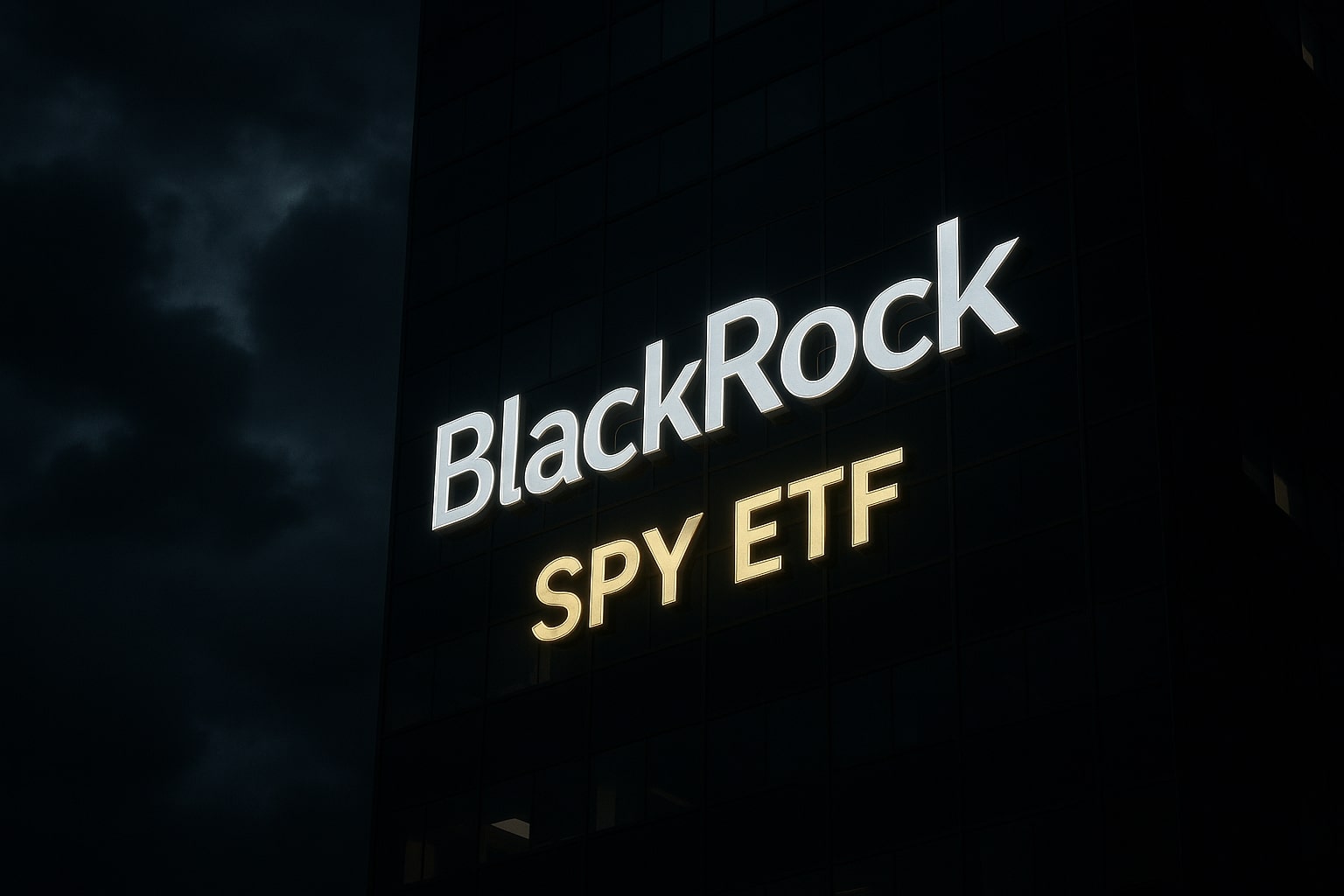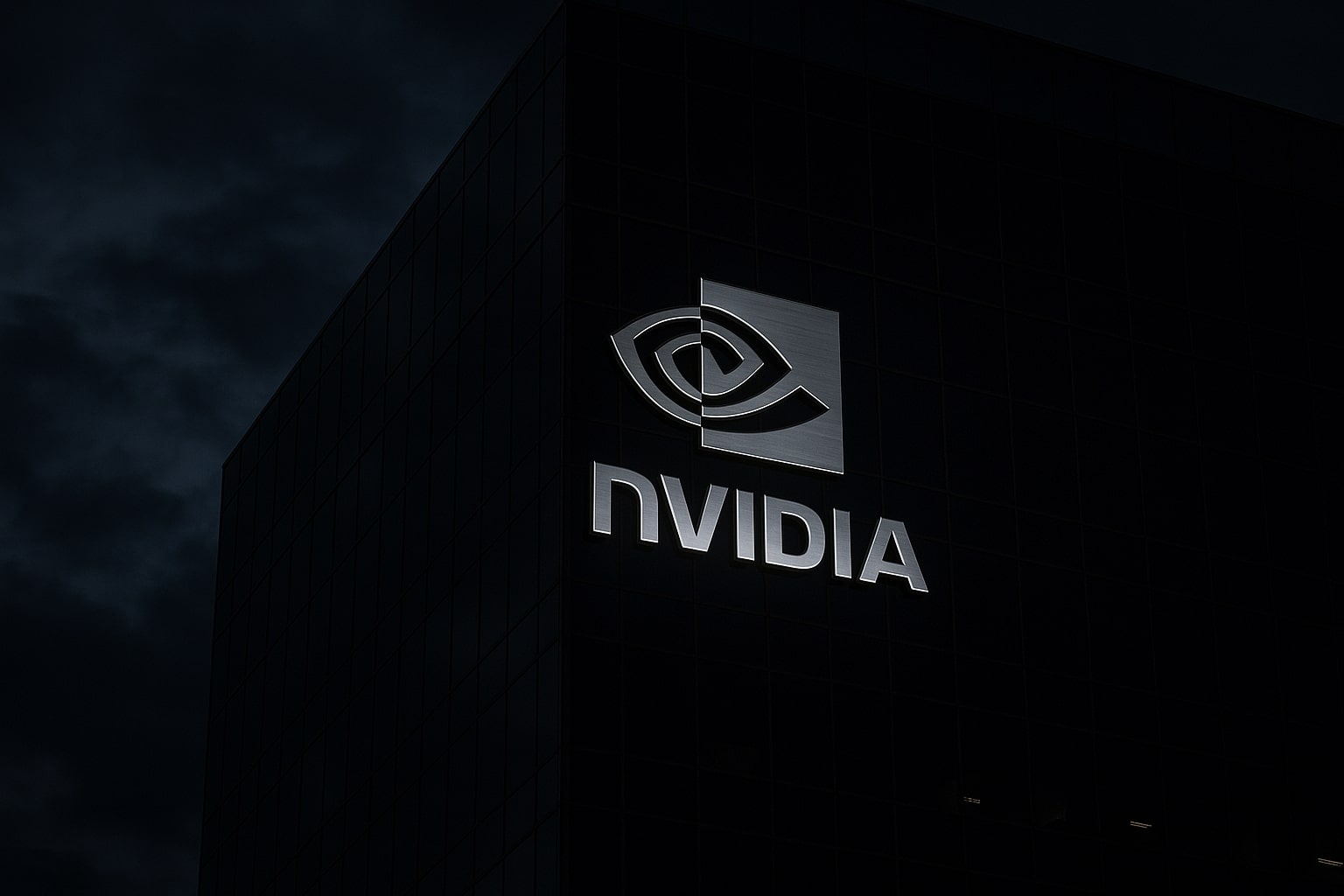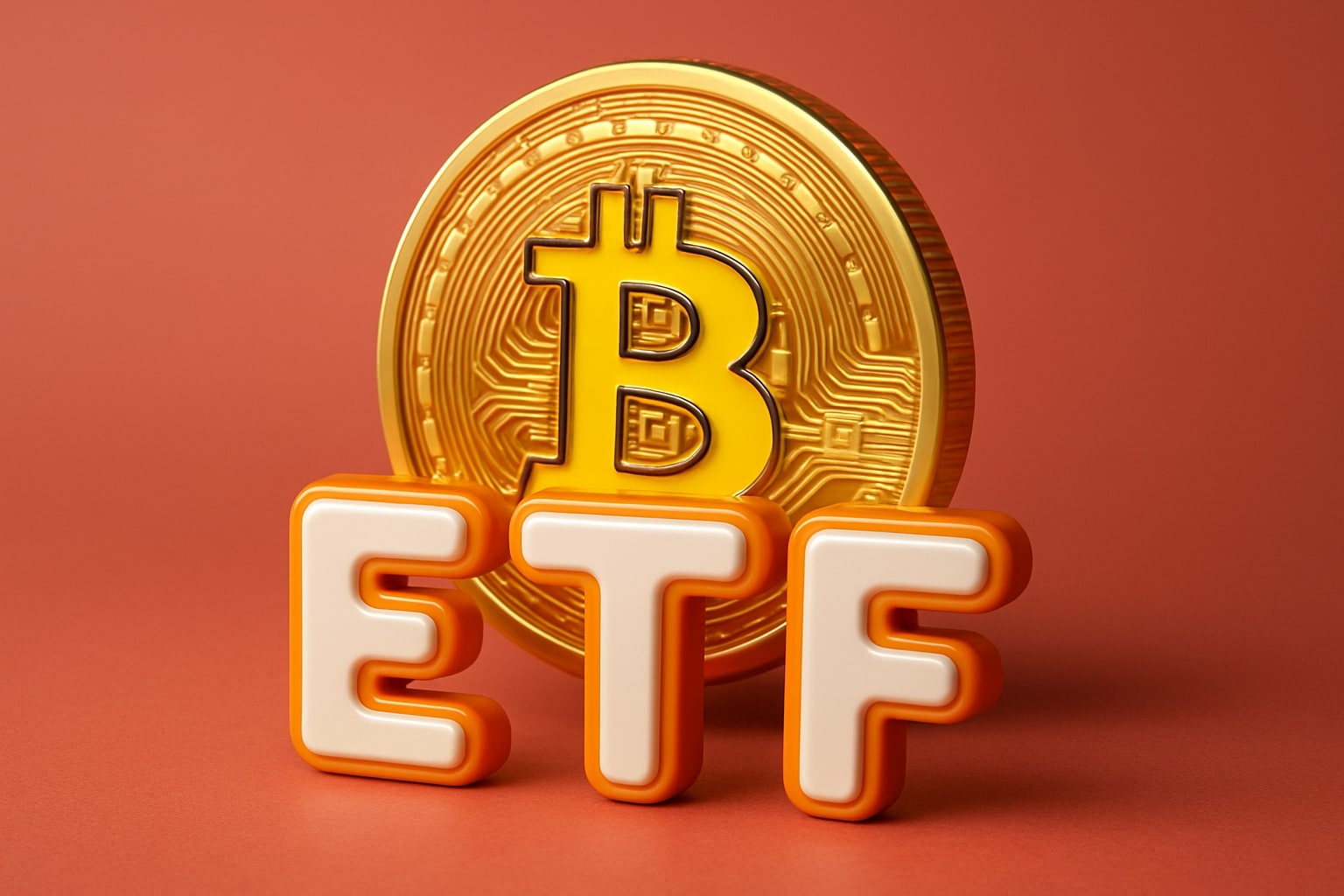Wall Street Gains as Tech Earnings Ignite Momentum Across Indices
U.S. markets moved higher Thursday as corporate results reignited optimism across Wall Street. The S&P 500 (6,676.67 +0.08%), Nasdaq Composite (22,745.68 +0.33%), and Dow Jones Industrial Average (46,251.86 flat) advanced as investors refocused on earnings strength after weeks of trade tensions and political noise. Volume exceeded 21.5 billion shares, above the 20-day average, confirming renewed risk appetite. Seven of the eleven S&P sectors climbed, led by technology (+1.0%), utilities (+1.3%), and real estate (+1.5%). The Cboe Volatility Index (VIX 20.64) held steady near the 20 level, signaling that traders remain cautious but engaged.
The Russell 2000 (2,510.63 –0.36%) continued to lag as investors favored large-cap leaders tied to the AI boom. Analysts warn that although headline indices are near record highs, participation remains narrow, leaving the rally vulnerable if mega-caps falter. Concentration risk within the S&P 500 remains the market’s hidden fault line.
AI Trade Reignites Tech Stocks as NVIDIA, TSMC, and Broadcom Extend Leadership
Technology powered the advance once again. Taiwan Semiconductor Manufacturing Co. (TSM) stunned markets with Q3 revenue of $33.10 billion, up 40.8% year-over-year and 10% sequentially, while profit jumped 13.6% from Q2. Management raised its 2025 growth target to mid-30%, up from 30%, and reaffirmed a $42 billion capex program to expand AI chip capacity. CEO C.C. Wei emphasized that “the AI megatrend is strengthening,” noting AI packaging now contributes roughly 10% of total revenue.
Analysts quickly upgraded the stock: Morgan Stanley lifted its target to $55.15, Barclays reaffirmed its overweight rating citing a strong 2026 pipeline, and Bank of America raised its target to $58.80, calling TSMC’s AI position “unrivaled.” The bullish tone rippled through the Philadelphia Semiconductor Index, pushing NVIDIA (NVDA +2%) and Broadcom (AVGO +3%) higher. The Nasdaq’s climb marked a third straight gain as investors doubled down on the AI trade despite macro volatility.
Salesforce Rockets on Growth Vision While HPE Stumbles on Weak Outlook
Salesforce (CRM) delivered the Dow’s standout performance, soaring more than 6% after projecting over $60 billion in annual revenue by 2030, well above analyst consensus of $58.37 billion. Executives outlined plans for 10%+ organic growth between 2026 and 2030, signaling a renewed acceleration following a two-year slowdown. The company highlighted that its next stage of expansion will rely heavily on AI integration and efficiency gains to lift margins.
In contrast, Hewlett Packard Enterprise (HPE) sank 9% after forecasting FY 2026 EPS of $2.20–$2.40 and 5–10% revenue growth, a steep slowdown from the current year’s 14–16% range. Even with a 10% dividend hike and a $3 billion buyback authorization, investors focused on decelerating demand for servers and enterprise cloud solutions, sending the stock to its lowest level in months.
Financial Heavyweights Boost Confidence as Schwab, Morgan Stanley, and BofA Beat Estimates
The financial sector added momentum to the broader market through stronger-than-expected earnings. Charles Schwab (SCHW) climbed 3.8% after posting record quarterly revenue of $6.14 billion (+27% y/y) and adjusted EPS of $1.31, surpassing the forecast of $1.25. Client assets swelled 17% to $11.59 trillion, driven by a surge in younger investors—about one-third of new accounts came from Gen Z clients. CEO Rick Wurster said the company is “already winning the next generation of investors.”
Morgan Stanley (MS) reported $2.80 EPS vs $2.08 expected, on $18.22 billion revenue, exceeding consensus by 10.8% and rising from $15.38 billion a year earlier. Strong wealth-management margins offset weaker bond trading.
Bank of America (BAC) matched the upbeat tone with $1.06 EPS vs $0.94 expected on $28.09 billion revenue, up 2.96% above estimates and 11% higher y/y. Consumer banking and card spending offset softer net-interest income. Despite the KBW Nasdaq Bank Index (147.78 –0.99%) closing slightly lower, the earnings parade reinforced that credit quality and capital strength remain intact.
Transportation Sector Delivers Its Strongest Rally in Decades
Transport shares surged after J.B. Hunt Transport Services (JBHT) delivered blowout results. The stock rocketed toward its best day since 1998 after reporting Q3 EPS of $1.76 vs $1.46 expected on $3.05 billion revenue, exceeding estimates. Operating income in its intermodal division climbed 12%, benefiting from balanced networks and improved asset utilization. The performance fueled gains in peers Schneider National (SNDR), Old Dominion Freight Line (ODFL), and Saia (SAIA), lifting the Dow Transportation Index to multi-month highs.
The results signaled that freight demand, though uneven, is stabilizing after last year’s slump. Rising consumer shipments and easing fuel costs added tailwinds to logistics operators positioning for holiday-season strength.
Manufacturing Data Weakens but Forward Outlook Brightens
Macro data painted a mixed picture. The Philadelphia Fed Manufacturing Index collapsed 36 points to –12.8, its weakest reading since April, while the shipments index fell 20.1 points to 6.0. The employment component slipped 1 point but stayed positive at 4.6. Despite current softness, the six-month business outlook improved five points to 36.2, suggesting optimism for early 2026.
Federal Reserve Governor Christopher Waller reaffirmed expectations for an imminent rate cut but urged caution, stating the Fed must “move with care” amid conflicting data—solid GDP growth paired with a softer labor market. The ongoing government shutdown has delayed key data releases, further clouding the policy picture.
Trade Tensions and Treasury Yields Define the Risk Landscape
Geopolitical noise again dominated macro sentiment. President Trump’s threat of a 100% tariff on Chinese imports reignited trade-war jitters after Beijing restricted rare-earth exports. The rhetoric briefly lifted volatility before easing mid-week as negotiations resumed. Treasury Secretary Scott Bessent clarified that Washington “will not adjust trade policy to rescue markets,” reinforcing the administration’s tough stance.
Bond markets stabilized, with the 10-year Treasury yield at 4.03%, near a one-month low after touching 4.00%. Capital Economics analysts argued that yields “will not fall much further” since money markets already price multiple Fed cuts. The iShares 7–10 Year Treasury Bond ETF (IEF 97.18 +0.08%) mirrored the steady tone, reflecting a wait-and-see approach from fixed-income investors.
Global and Commodity Markets Add Layers to the Rally
In Europe, Nestlé (SW: NESN) jumped 8% after announcing plans to cut 16,000 jobs over two years to reduce costs and protect margins. Investors welcomed the aggressive restructuring as a signal of renewed profitability focus.
In Asia, optimism built after Treasury Secretary Bessent hinted that the U.S. and South Korea were nearing a trade pact. Hyundai Motor climbed 8% and Kia Corp. gained 7%, driving the Kospi to record highs.
Commodities also reflected the risk-on tone. Gold (XAU/USD 4,287.60 +2.05%) set a fresh record as traders priced in rate cuts and sought shelter from political turbulence. WTI crude (CL=F 58.46 +0.33%) recovered after India rejected claims it would halt Russian oil imports, reaffirming its energy independence. Bitcoin (BTC-USD 110,404 –0.83%) softened as equity flows drew capital away from digital assets, though institutional interest remains strong following ETF inflows earlier this month.
Earnings Strength Versus Market Concentration: The Core Dilemma
Despite Thursday’s rally, the market’s narrow leadership remains an ongoing risk. LPL Financial strategist Adam Turnquist noted that while more S&P 500 constituents are in uptrends than downtrends, the gap is shrinking—evidence of fragility beneath the surface. With megacap technology dominating index performance, sustained breadth will be crucial for the next leg higher.
Investors now face a dense earnings calendar, a looming Fed decision, and the tail risk of prolonged government paralysis. Volatility around 20 on the VIX suggests two-way risk remains high, though positive earnings surprises and stable yields offer near-term support.
Verdict: Cautiously Bullish Bias — Short-Term Buy
The combination of record tech profits, firm bank earnings, and resilient transport data argues for continued upside in the Nasdaq, S&P 500, and Dow over the near term. However, elevated concentration in AI-linked equities and geopolitical overhangs limit conviction for a full-scale bull call. The bias remains cautiously bullish, favoring selective accumulation in leaders like TSMC (TSM), NVIDIA (NVDA), and Salesforce (CRM) while maintaining defensive exposure in gold and utilities until policy clarity returns.
That's TradingNEWS



















